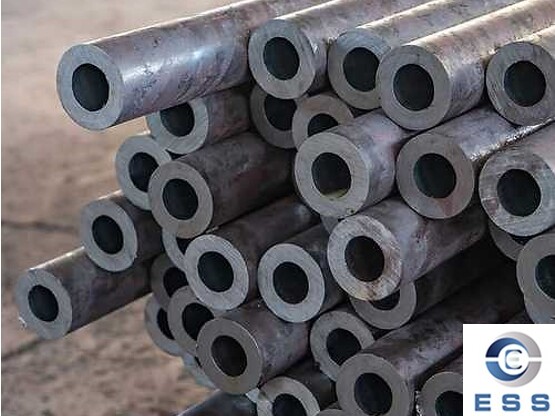
In today's energy transportation field, the
safety, durability and economy of natural gas pipelines are crucial. However,
faced with many choices of pipeline materials, many people hesitate between mild
steel tube and galvanized
pipe. Should I choose mild steel tubes or galvanized pipes? Natural gas
pipelines generally use mild steel tubes as the main material. Why choose mild
steel tubes instead of galvanized pipes?
What is mild steel tube
Mild steel tube refers to a steel pipe with
a carbon content of less than 0.25%. It is a type of carbon
steel pipe with generally good strength and toughness. Mild steel tubes are
mainly used to manufacture machine parts, structural parts, axles, wheels,
etc., because they have high compressive strength, excellent toughness, wear
resistance and weldability, and can meet the use requirements under various
strengths and impact loads. In addition, mild steel tubes can also be processed
into various shapes of products by hot rolling, cold rolling and stamping.
What is galvanized pipe
Galvanized pipe is made of ordinary carbon
structural steel after pickling, patting, and soaking in mercury or zinc
solution. It has good anti-corrosion performance and can be rusted by oxidants
in the air under the catalysis of catalysts, thus forming a dense protective
layer, which greatly improves its corrosion resistance. Galvanized pipes can be
widely used in chemical, light industry, metallurgy, construction,
shipbuilding, railways, automobiles and other industries, and have a wide
market demand.
Difference between mild steel tube and
galvanized pipe
Although mild steel tube and galvanized
pipe both belong to the category of steel pipe, there are great differences in
their materials and uses. Mild steel tube is a pipe made of low-carbon steel as
raw material, which has high strength and wear resistance, while galvanized
pipe mainly improves its corrosion resistance through surface galvanizing. From
the perspective of use, mild steel tube has excellent mechanical properties. In
some fields with high strength requirements, such as drill pipe and oil casing
pipe manufacturing in oil extraction, mild steel tube or carbon steel pipe
with similar carbon content will be given priority to ensure performance in
harsh environments. Galvanized pipes are more commonly used in general
industrial and construction fields that have high requirements for corrosion
resistance and relatively less stringent requirements for strength.
Galvanized pipes or mild steel tubes, which
is better for natural gas pipelines?
The selection of materials for natural gas
pipelines needs to consider multiple factors such as gas safety, pipeline
stability, and service life. At present, natural gas pipelines generally use
mild steel tubes as the main material. Compared with galvanized pipes, mild
steel tubes have the following three advantages:
1. Stronger corrosion resistance
The inner wall of mild steel tubes is
smooth and not easy to corrode, while the zinc layer of galvanized pipes is
prone to fatigue damage as the gas load changes, affecting its service life.
2. Better mechanical properties
Mild steel tubes are not only strong, but
also have good plasticity and can withstand large gas loads. Its durability far
exceeds that of galvanized pipes, especially in high-pressure and high-flow
natural gas transportation, where mild steel tubes perform better.
3. More pressure-resistant
Natural gas pipelines need to withstand
higher pressures, and the high-strength material of mild steel tubes enables
them to easily meet this requirement. In contrast, the zinc layer of galvanized
pipes is easily damaged under high-pressure environments and cannot provide
sufficient safety guarantees.
Summary
In order to ensure the safety of natural
gas pipelines, it is recommended to use mild steel tubes as the main material
for natural gas pipelines. At the same time, strict control should be exercised
during the design, manufacturing and transportation of pipelines to ensure
multiple factors such as the safety and service life of the pipelines.













 Eastern Steel Manufacturing Co.,Ltd not only improve product production and sales services, but also provide additional value-added services. As long as you need, we can complete your specific needs together.
Eastern Steel Manufacturing Co.,Ltd not only improve product production and sales services, but also provide additional value-added services. As long as you need, we can complete your specific needs together.










